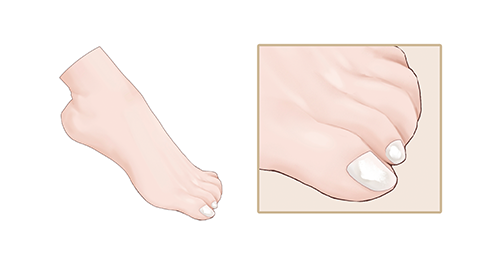What causes redness, swelling, and pain around the toenails?
In general, redness, swelling, and pain around the toenails may be caused by wearing tight shoes, vigorous exercise, athlete's foot, paronychia, gout, and other factors. Symptomatic management through general care and medication may be necessary. If discomfort occurs, it is recommended to seek medical attention promptly and undergo appropriate treatment under a doctor's guidance. Detailed explanations are as follows:

1. Wearing tight shoes
Wearing excessively tight or ill-fitting shoes for prolonged periods can compress the skin around the toenails, leading to poor local blood circulation and resulting in redness, swelling, and pain. Symptoms may also include numb toes and difficulty walking. It is recommended to switch to properly fitting shoes and avoid high heels or pointed-toe shoes.
2. Vigorous exercise
During vigorous exercise, the skin and soft tissues around the toenails may experience external pressure or friction, causing minor trauma and an inflammatory response manifested as redness, swelling, and pain. Symptoms may also include subungual hematoma (bleeding under the nail) and skin damage. It is recommended to rest and elevate the lower limbs, and apply ice packs to reduce inflammation and swelling.
3. Athlete's foot
Fungal infection of the skin around the toenails can lead to athlete's foot, triggering a local immune response and release of inflammatory mediators, causing redness and pain. Symptoms may also include peeling skin, itching, and thickened or deformed nails. It is recommended to use antifungal medications such as clotrimazole cream, terbinafine cream, or itraconazole capsules under a doctor's guidance.
4. Paronychia
Paronychia is usually associated with improper nail trimming or poor personal hygiene, leading to bacterial infection in the nail fold area. Once bacteria invade this area, they multiply and produce toxins, resulting in local symptoms such as redness, swelling, pain, and pus formation. It is recommended to use medications such as erythromycin ointment, mupirocin ointment, or amoxicillin capsules as directed by a physician to alleviate symptoms.
5. Gout
Gouty arthritis is an inflammatory condition caused by the deposition of urate crystals in the joints and surrounding tissues. When these crystals irritate the surrounding tissues, inflammatory mediators are released, leading to symptoms such as local redness, swelling, and pain. These symptoms may be accompanied by joint warmth, swelling, and limited mobility. It is recommended to use medications such as benzbromarone tablets, colchicine tablets, or allopurinol tablets under medical supervision to relieve symptoms.
It is also recommended to avoid prolonged standing or walking in daily life, allowing the toes to rest sufficiently, which helps alleviate symptoms.








